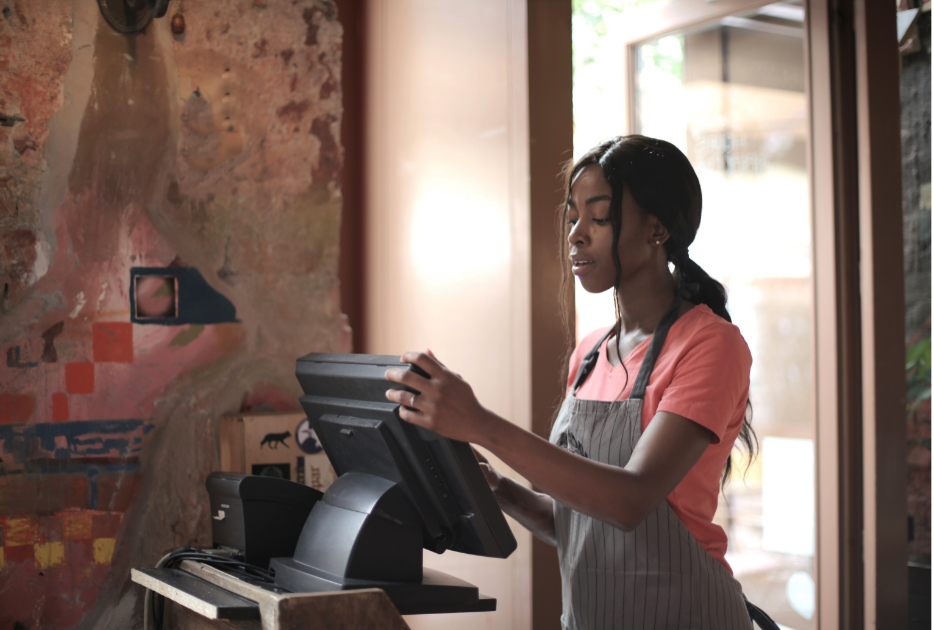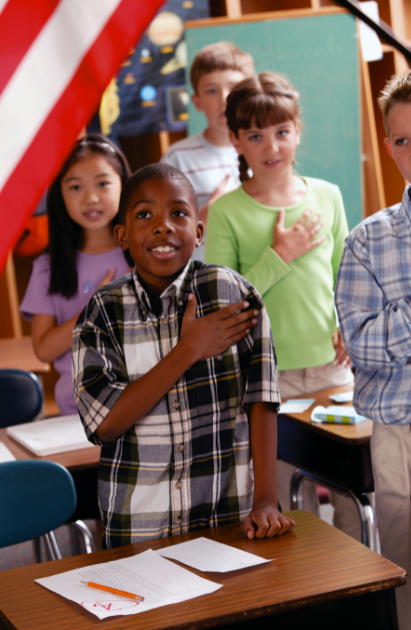Ahh, there’s nothing better than some time with Mother Nature.
Breathing the fresh air, being unplugged and disconnected, experiencing the peacefulness of the outdoors ... it’s pretty fantastic.
When kids go outside and play in nature, there are real benefits to both physical health and emotional well-being. The only problem is, kids are spending less time in nature and more time hooked up to their tablets, smartphones, and video games.
Maybe it’s time to put down that device and take a walk in the woods!
That's why in Denmark, “forest kindergartens” have scrapped the traditional preschool classroom.
These schools take kids back into nature, allowing them to learn through free play and exploration. And this less structured preschool setup seems to be working. According to a recent report by the Organisation for Economic Co-operation and Development, Danish schools outperformed American schools in math and science.
Luckily, Danes aren’t the only ones taking early childhood education back into nature.
There is a growing movement of forest schools right here in the United States as well. Here are just a few of them (and they’re all pretty awesome).
1. Cedarsong Forest Kindergarten (Vashon, Washington)
Kids at Cedarsong head off to another adventure in the forest. Photo by Cedarsong Nature School used with permission
In a typical preschool, you'd likely see a plethora of brightly colored toys, a water/sand table (my personal favorite), puzzles, blocks, and if you’re lucky, an outdoor playground. Basically, you’d never run out of activities to do.
Well, at Cedarsong Nature School, things are just a little bit different. Cedarsong believes in an unstructured immersion in nature. This means there is no set agenda, projects, or teacher direction. Cedarsong sees a value in just being in nature, not necessarily even needing to “do” anything.
Building a "dam" in the mud. Photo by Cedarsong Nature School, used with permission
At Cedarsong Nature School, kids are encouraged to explore, ask questions, cooperate with one another, and take moderate risks to build self-confidence. Teachers guide students in their curiosity about nature, but don’t hover over the kids or monitor their every move.
2. Denison Pequotsepos Nature Center (Mystic, Connecticut)
Who needs a tablet when you have a forest? (And a bunny!) Photos by Denison Pequotsepos Nature Center, used with permission
The Denison Pequotsepos Nature Center preschool certainly lives up to its motto: “nature is our niche.” The preschool is situated on a 400-acre nature preserve, complete with meadows, ponds, hiking trails, and plenty of rocks and trees to climb on. They consider these grounds to be a “living classroom,” which is a pretty cool concept!
The DPNC Nature Preschool has turned down offers to create a structured "nature playground." They believe that nature creates its own playground, where children can create their imaginative, limitless fun.
3. Little Tree Huggers (Leesburg, Virginia)
Making new friends at Little Tree Huggers. Photo by Heaton Johnsonm used with permission
At Little Tree Huggers, children not only learn about math and language arts, but are also immersed in Spanish and exposed to German and Italian. However, what truly sets LTH apart from a “normal” preschool is that most instruction takes place outdoors in a natural environment surrounded farm animals.
Kids and chickens, what better combination? Photo by Heaton Johnson, used with permission
Children have the freedom to choose their playtime activities, which might include interacting with animals, making paintings with natural materials, or listening to the sounds of nature from the Little Tree Huggers observation deck. There is an emphasis on sustainability, teaching kids from a young age how to reduce, reuse, and recycle.
4. Worldmind Nature Immersion School (Denver, Colorado)
A little snow and ice can't keep these kids from having fun. Photo by Worldmind School, used with permission
Located in Colorado, Worldmind Nature Immersion School has its fair share of extreme weather. But no matter the season, one thing remains the same. Kids spend the entire day outside — they don’t even have an indoor facility!
Tree trunk too high? Not for these kids! Photo by Worldmind School, used with permission
School classes are held entirely on public land, exploring open space and city parks to connect children to the ecology of where they live. If there is extremely severe weather, they’ll explore indoor places, such as the Denver Museum of Nature and Science, to enhance their learning of the natural world. Worldmind School provides an informal setting for learning to naturally occur during free outdoor playtime.
5. Nature Preschool at Irvine (Owings Mills, Maryland)
Catching butterflies or going for a hike sure beats the classroom. Photo by Nature Preschool at Irvine, used with permission
At the Nature Preschool at Irvine Nature Center, teachers act as guides, allowing children to venture out and discover the magic of nature in unstructured nature play. Children develop responsibility and independence through everything they do, from putting their own boots on to composting an apple to feeding the birds.
While the learning here takes place almost entirely in nature, it is licensed by the state of Maryland and accredited by the NAEYC (National Association for the Education of Young Children), showing that these nature-immersion schools still provide a strong foundation. However, Irvine Nature Preschool doesn’t rush or force the learning process; it allows children to learn and develop at their own natural pace.
6. Mother Earth School (Portland, Oregon)
Learning how to use (real) tools. Photo by Mother Earth School, used with permission
At Mother Earth School, children play in a grove of cedar trees, the perfect backdrop for free play. Kids use their imagination to make the forest come to life. Who needs plastic toys (or any toys, really), when you can make a tree branch become a fishing pole or turn a log into a train?
There's plenty of time for free play each day, in addition to time spent making natural arts and crafts. Kids here begin learning how to carve wood with real Swiss-made knives at the age of four (um, I can’t do that, and I’m an adult) — talk about fine motor skills!
During snack time, kids help to build the fire and then get to enjoy organic snacks cooked on a rocket stove and bread baked fresh in a cob oven. This sounds a whole lot more exciting than the Nilla wafers I ate from a box (which were admittedly delicious) during my preschool years!
7. Berkeley Forest School (Berkeley, California)
Forget electronics. Trees are all these kids need! Photo by Berkeley Forest School, used with permission
While there is a daily routine at Berkeley Forest School, no two days end up the same. The discoveries kids make on their daily adventures provide inspiration for sensory-based learning activities. A typical day includes observing wildlife and journaling about the findings, building swings and shelters in the woods, and building and cooking on an open fire.
Look at that concentration! Photo by Berkeley Forest School, used with permission
The forest school movement is continuing to expand in the United States (and around the world), taking kids out of structured classroom and back into nature.
Hooray for forest schools! Photos by Nature Preschool at Irvine used with permission
Judging by the looks on these kids faces, it seems like these programs are doing something (perhaps almost everything) right!




 Beaver on riverbank.
Beaver on riverbank.  Pbs Nature Swimming GIF by Nature on PBS
Pbs Nature Swimming GIF by Nature on PBS  An actual beaver dam on the now-thriving Price River
An actual beaver dam on the now-thriving Price River 
 Who doesn't love Pluto?
Who doesn't love Pluto?  Pluto agrees.
Pluto agrees. 
 a piece of paper with a heart drawn on it Photo by
a piece of paper with a heart drawn on it Photo by 
 "Bought an espresso machine, took some time to learn how to dial it in and pull a proper shot."
"Bought an espresso machine, took some time to learn how to dial it in and pull a proper shot." "Frozen meals are just as unhealthy, but much cheaper."
"Frozen meals are just as unhealthy, but much cheaper." "I’ve embraced the gray!"
"I’ve embraced the gray!"  "Bidet toilet seat is cheap, easy to install, much easier and faster to use."
"Bidet toilet seat is cheap, easy to install, much easier and faster to use."
 American portion sizes are colossal.Canva Photos
American portion sizes are colossal.Canva Photos American public restrooms aren't very private.Canva Photos
American public restrooms aren't very private.Canva Photos Cashiers in America stand all shift long.Canva Photos
Cashiers in America stand all shift long.Canva Photos America loves the Pledge of Allegiance.Canva Photos.
America loves the Pledge of Allegiance.Canva Photos. Cosmetic surgeries on pets are...a choice.Canva Photos.
Cosmetic surgeries on pets are...a choice.Canva Photos. America loves extra sugar in savory foods.Canva Photos.
America loves extra sugar in savory foods.Canva Photos.